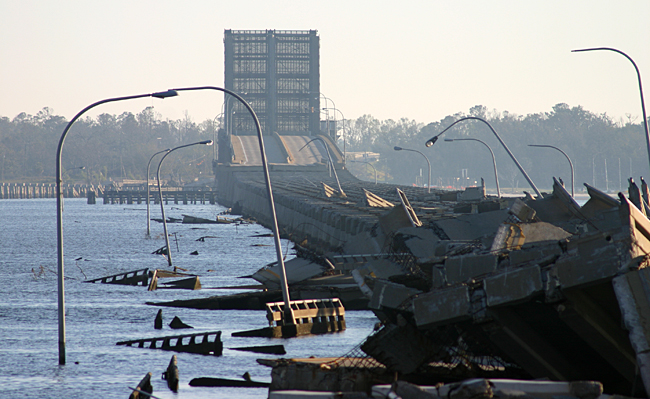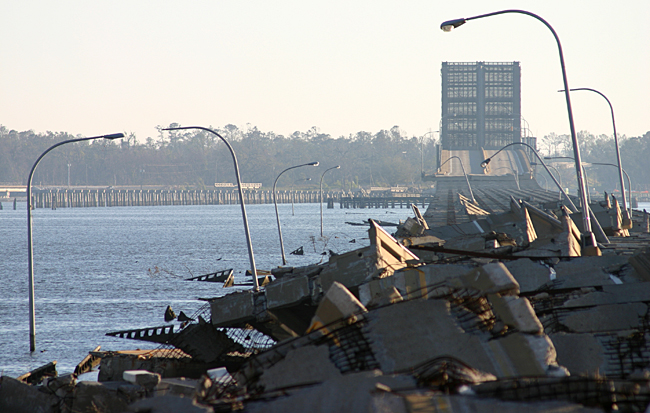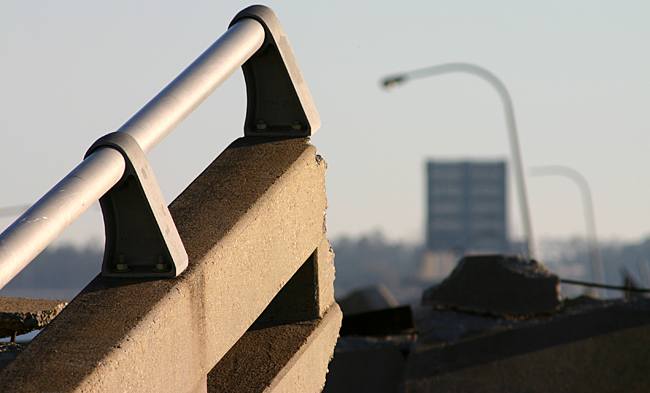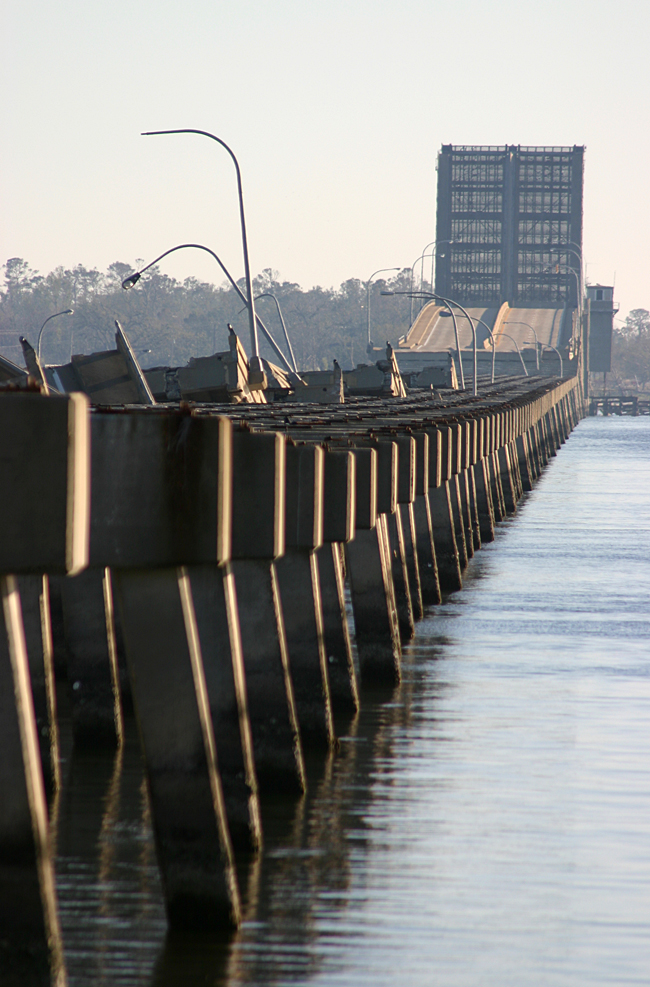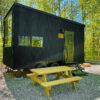Nine years ago today — on August 29, 2005 — the landfall of one of the most powerful hurricanes in recorded history occurred on the coast of the Gulf of Mexico in the United States.
With property damage estimated at $108 billion, Hurricane Katrina was the costliest natural disaster — and with 1,833 fatalities, one of the five deadliest hurricanes — in the history of the United States.
One particular area which was amongst the hardest hit was the Mississippi Gulf Coast. Devastation was widespread from Bay Saint Louis to Pascagoula; from Long Beach to Biloxi; from Gulfport to Ocean Springs.
Camille — the benchmark hurricane which occurred in 1969 and had been remembered every year since — suddenly became an incomparable stepchild to the unimaginable power wielded by Katrina. Whole neighborhoods disappeared. Roads were washed away. Dead brown trees stood, bent and cracked in what was left of once wooded areas. A casino was laid to rest on top of a hotel. Venerable structures which withstood the wrath of Camille did not have a chance against Katrina.
In early September of 2005 — fewer than two weeks after the unmerciful Katrina finally departed — I traveled to the Mississippi Gulf Coast to volunteer and assist the victims of this event, as I knew people whose homes and lives had suddenly been severely affected. As I helped them out, I shot hundreds of photographs — as well as video — documenting what to me seemed like an unbelievable landscape of sheer destruction.
So many photographs were shot that I decided that for this year, I will simply show the photographs of one single bridge: the Biloxi Bay Bridge, which once connected the Point Cadet area on the east end of Biloxi with Ocean Springs via United States Highway 90. A new higher Biloxi Bay Bridge with two additional lanes has since replaced the old bridge. The old draw bridge no longer exists.
I know I overdid it on shooting so many photographs just of this bridge alone; but all of the different angles just fascinated me. You had to be there to see and touch for yourself amidst the eerie quiet of the morning on a roadway and bridge which would normally carry heavy traffic. I simultaneously tried to imagine what the scene was like during the hurricane itself, which was not an easy thing to do.
It was amazing to see how the roadway tore away from the sidewalk on the approach to the bridge; how sections of the bridge were lifted by the tide like little toys and dropped on one side into the wet sand and water like fallen dominoes once the water receded; how street lights stood uselessly in the water still attached to their anchors; how layers of the roadway were peeled away when viewed straight on at the cross sections where the road itself was severed; and how an elaborate painting which I did not even know existed under the bridge survived the onslaught of wind and surf — as well as watching how birds and other fauna were going about their business, indicating that despite the massive disaster caused by Katrina, life indeed does continue.
You can travel to the Mississippi Gulf Coast — which is famous for its fresh seafood — and do many activities once again. Take a scenic drive on United States Highway 90 and view the old live oak trees which survived Hurricane Katrina; and see the carvings by artists on the trunks of the live oak trees which did not survive. Dine on a fried shrimp po’ boy sandwich. Take your chances at a casino. Perhaps just relax on the miles of beach along the coastline. Life is back to normal — although you might still spot a reminder in certain places that Hurricane Katrina was indeed there.
I will let the photographs do most of the talking — all of which were taken on the west end of where the bridge once stood and posted below in chronological order. In the meantime, let us please take a moment to remember those poor souls who lost their lives as a result of Hurricane Katrina, which will not be forgotten for generations to come…
All photographs ©2005 by Brian Cohen.



























